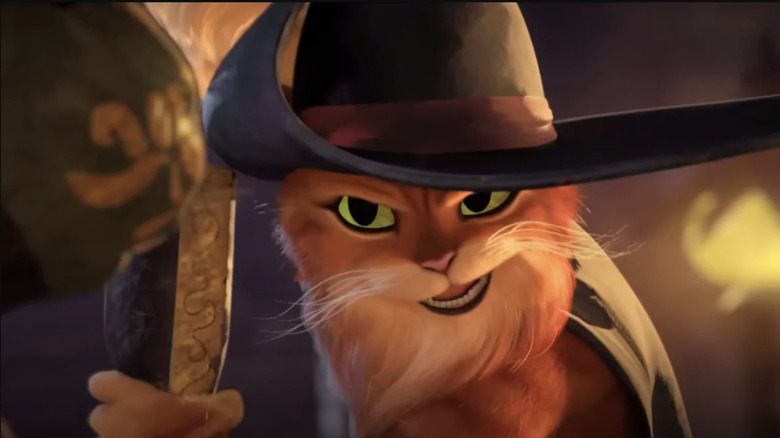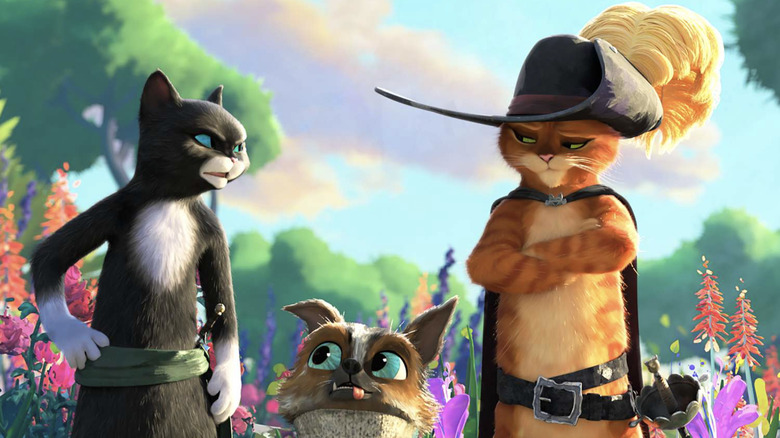How Sergio Leone's Man With No Name Trilogy Influenced Puss In Boots: The Last Wish [Exclusive]
If you would have told 11-year-old me that I'd be in my 30s and still talking about the "Shrek" cinematic universe ... I probably would have believed you. For over 20 years, "Shrek" has permeated pop culture with merchandising, TV specials, short films, a Broadway musical, themed raves (no, seriously), and a spin-off series that has turned into its own bonafide franchise. First introduced in "Shrek 2," the character of Puss in Boots (Antonio Banderas) is back with an all-new movie, the shockingly heavy, "Puss in Boots: The Last Wish." The film sees our titular hero at a crossroads — realizing that his life of adventure has cost him eight of his nine lives. Knowing that every adventure could be his last, Puss sets out on the adventure of a lifetime to find the mythical Last Wish in an attempt to restore his nine lives.
While "Shrek" was a thinly-veiled subversion of the fairytale stories and cinematic formulas that made Disney the biggest name in entertainment, "Puss in Boots: The Last Wish" was influenced by some not-so-kid-friendly sources. In an interview with /Film's own Rafael Motamayor, the film's director, Joel Crawford, revealed that he looked to the world of Spaghetti Westerns for inspiration. "We knew the template was 'The Good, the Bad, and the Ugly,'" he explained. The similarities are obvious, with, as he described them, "larger-than-life, cynical characters going after this treasure." Character inspiration is one thing, but Crawford knew that they needed some connective tissue within the story. "We knew we had all these characters, but we needed a device to carry the theme of the story that everybody who's selfishly after this thing they think will fix their lives."
The answer was found in Clint Eastwood's legendary Spaghetti Western persona/character, The Man with No Name.
Using Sergio Leone as a template
Joel Crawford noted that introducing a character inspired by The Man with No Name was the perfect addition to the story because it juxtaposes against all of the other characters' motivations in the film. "That was kind of the catalyst, story-wise," he added. "Then one of the fun traits of finding that character, the co-director Januel [Mercado] and I were looking at The Man With No Name, and just thought it's fun to have a subtle reference of a dog with no name, but it's because he's never had a home, never had anyone to name him."
Using the films of Sergio Leone as a template provided a familiar sandbox for the creative team to play in while putting together the story. The "good" is represented by Puss in Boots, Kitty Softpaws, and Perro, while the "bad" is campy villain Jack Horner, voiced by John Mulaney. "We called it 'The Good, the Bad, and the Goldie' because we got Goldilocks and the Three Bears, they're antagonists to what Puss wants, but they're kind of misunderstood," Crawford explained. "There's a fun edge to this crime family, but they're still a family, so there's a surprising warmth. That was our template to go, 'We can have all these characters who are after this, but that's how we're going to organize it so it doesn't get turned to chaos.'"
"Puss in Boots: The Last Wish" is now playing in theaters.

